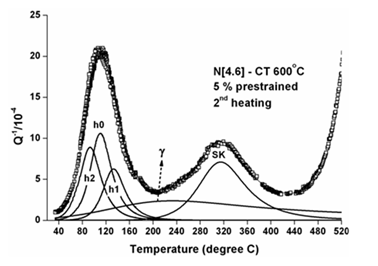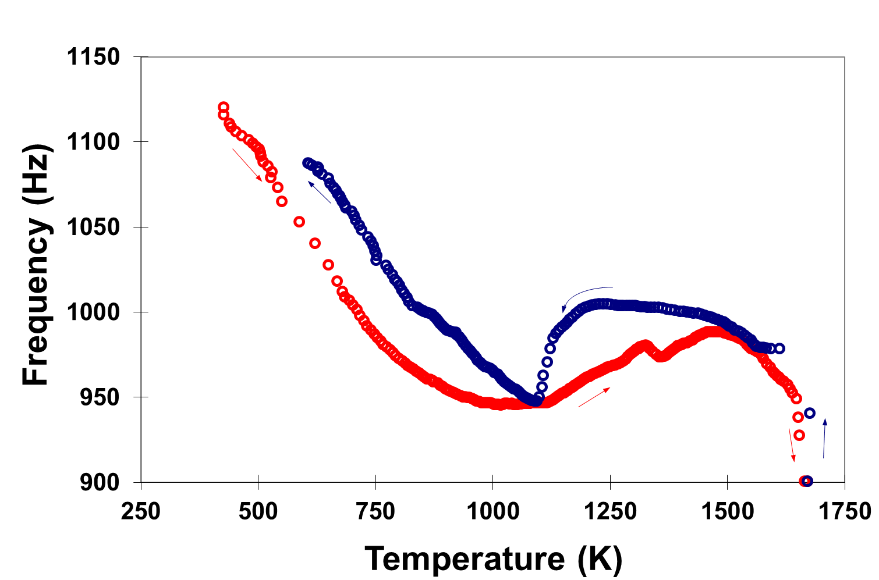Material crystal structure
The resonant frequency and internal friction are determined by the material structure of the measured sample and the shape and size of the sample. During a high temperature measurement the resonant frequency and internal friction of the sample is measured every 120 seconds during heating and cooling (standard settings, can be changed by the operator). Our systems can perform measurement from -100°C up to maximum 1700°C and during such a measurement the material structure of materials will undergo all kinds of changes and mapping out the resonant frequency and internal friction vs. temperature gives researchers an insight on what type of changes happened and at what temperature they occurred.
Example 1: Fe-Mn-N alloys
In the example right the internal friction vs. temperature was measured for three Fe-Mn-N alloys with different dimensions
For these samples with different dimensions the relaxation time is calculated from the damping peak. The change of the damping peak related to the frequency is used to calculate the activation energy. These properties are used to research the thermal activated motion of various defects in steel (i.e. interstitials, dislocations, grain boundaries, phase boundaries, martensitic phase boundaries, …).
For further analysis of a damping peak, i.e. Snoek relaxation peak in Fe-Mn-N alloys, the background damping was first subtracted from the experimental damping data. Fitting the data to a single Debye peak didn’t give satisfactory results. The experimental data could be fitted to a superposition of three Debye peaks for the N atoms only. The parameters of the three Debye peaks are summarized in terms of their activation energy and Tmax [1].


Example 2: partially stabilized ZrO2
In the measurement left a sample with 2.7% MgO, partially stabilized ZrO2 was measured up to 1670 K
Analysing the data curve, frequency (and E) versus temperature, shows a sudden change during heating at about 1423 K during heating. This slope of the curve is contributed to the phase transformation from monoclinic to tetragonal. A stronger change is noticed at around 1023 K during the cooling of the sample. This is related to the phase transformation form tetragonal to monoclinic.
References
- J. Jung, E. Kozeschnik, S. Ho Han, B.C. De Cooman. Analysis of the Mechanical Properties of N-Added CMn Structural Steel by the Impulse Internal Friction Technique. Metallurgical and Materials Transactions A, vol. 43A (2012), 4587 – 4600
